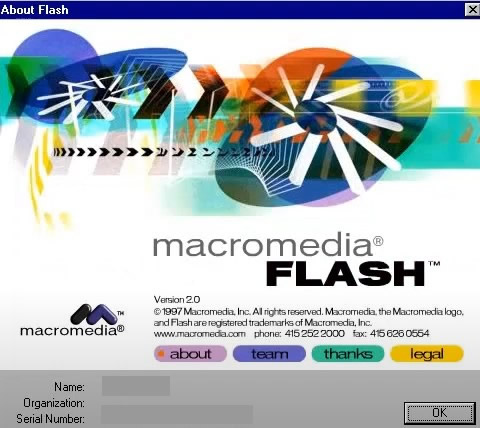Website Animation

At the beginning of the year, when planning out ideas for the Grateful Web Services blog, paying homage to Flash was on the list. For me, this was the start of animating the world wide web. It made an otherwise static website, come alive. Before Flash, it was just animating GIFS. Graphics Interchange Format. We used this as an animation tool for businesses to rotate their logos or specific text. By setting the rotation to 360 degrees, giving the illusion of 3D on the screen.
When Flash emerged on November 3, 2002, it was revolutionary and oh so cool. It was first a Macromedia product and Adobe would go on to acquire Macromedia in 2005 along with its products; Flash, Dreamweaver, Fireworks, Director, Cold Fusion, and a few other lesser-known titles. These were my favorite tools from “back in the day” when I first started in this ever-evolving technology industry. This was pretty early on in the Internet’s life span. Of course, before search engine placement was really even a “thing”. Now of course it’s everything. Old technologies and website features that are not recognizable by the search bots can’t or shouldn’t be used. As it’s been said so many times, a website can be beautiful but if no one can find the website and no one visits, it’s close to useless.
Adobe, as well as all web browsers, discontinued supporting Flash back in January of 2021. Of course, this means that Adobe will not issue any more updates or security patches. Web browsers will no longer display Flash content, and any website will just give users a broken experience. This also applies to web games using Flash, after January 1, 2021, they are no longer playable.
This just came into play with the 20th anniversary of 9/11
Journalism is often considered the first draft of history, but what happens when that draft is written on a software program that becomes obsolete? Some of the news coverage of the September 11th attacks and other major events from the early days of online journalism is no longer accessible. For example, The Washington Post and ABC News both have broken experiences within their September 11th coverage, See the full story for more information on this, at CNN
Many of us spent a lot of time learning how to use Flash. Technology is always changing and this is a big part of the reality for those of us who work in this ever-changing technology space. It is fun, exciting, and frustrating all at the same time. These days, we have other ways to use animation in websites that don’t hinder searches, and most are much easier to implement.
There are lots of ways to add movement to your otherwise static website. I will keep this part short so you don’t start to glaze over. This is why you hire someone else to deal with these details! Your developer can use CSS (Cascading Style Sheets) which is a special set of style rules and helps to keep designs consistent. This is used for simple animations and it won’t work if you need more than three animations in a row. So that leads us to JavaScript, which can handle sequential animations and is more powerful and flexible. Another choice would be to use SVG’s, which stands for Scalable Vector Graphics. SVG elements can be animated with CSS.
You can use videos as a background, create button animations, content that slides in, fade-in, and website loading features. There are many loading plugins that can help keep the ever-impatient human entertained while the website loads. Otherwise, users have to wait while everything loads: website pages, PDF files, maps, videos, and other content. This brightens up the wait and creates the sense that your website is there and loading. You can use an image or logo or even, progress bars, and shape-changing animations.
Animations can be a great addition to a website’s look and feel, but they have to be worked in the right way to fit your style and goals. Animations definitely add to the user-friendliness of a website. When subtly added, animations are capable of building a strong connection between users and the content on the screen. Just use it thoughtfully and sparingly. Too much or careless integration of animations into your website can be a real eyesore – and no one wants that 😊
We have easier and better ways to do things as time moves forward but it is apropos to honor the official passing of one of the early tools. This was the beginning of giving visual appeal to websites that were no longer just a static, dry place for information. This breathed in life and stylized a user-friendly approach. The appeal and psychology of placing information in a visually pleasing way, that is received best by the user, are just as important as the content itself. The need for things to be aesthetically appealing is hardwired in all of us and part of our human experience.

